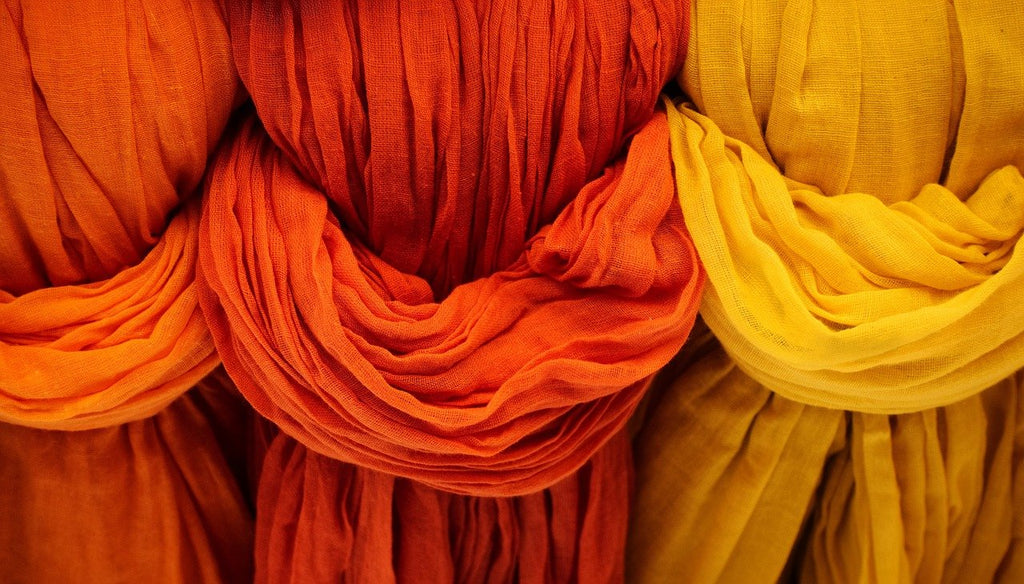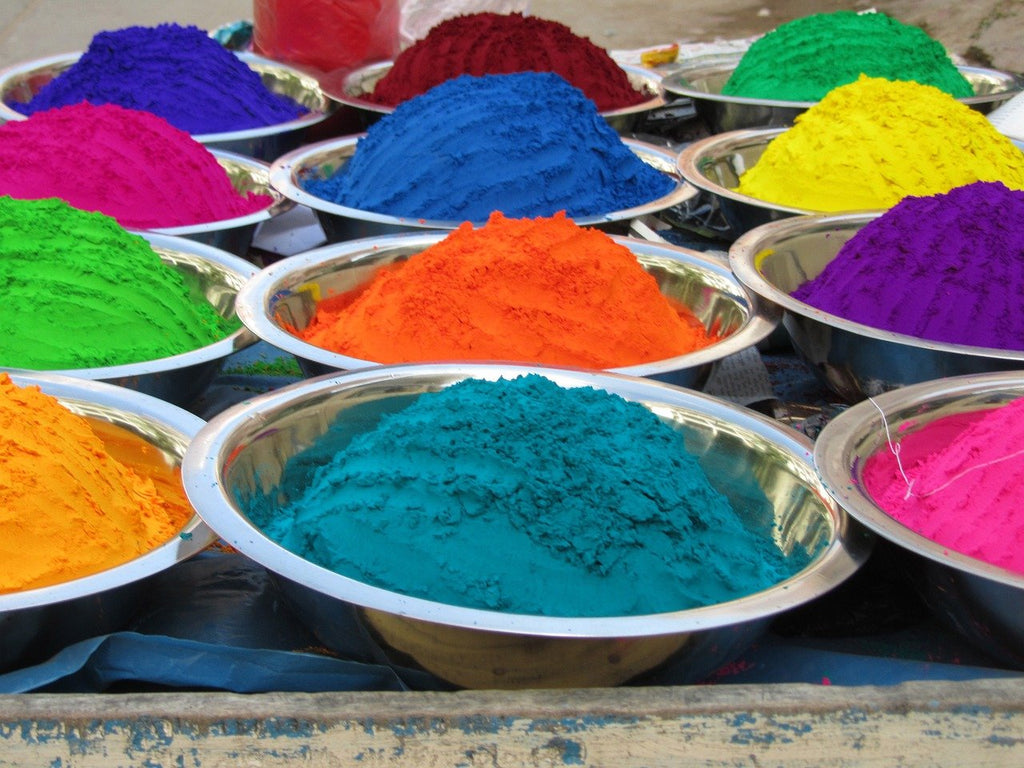
How to Dye with Citric Acid: A Comprehensive Guide
SUBSCRIBE TO OUR BLOG
Promotions, new products, and recipes.
Discover the joys of dyeing with the aid of citric acid, an odorless and easy-to-use method that unlocks a world of creative possibilities. This effective tool is great for adding customized color to yarn as it’s simple store away when not in use. Let us investigate Into this process. Including exploring the advantages of using citric acid, which dyes are best suited for our needs, important equipment needed along with various approaches on achieving beautiful shades and patterns.
Key Takeaways
-
Dyeing with citric acid is a safe and eco-friendly way to customize yarns.
-
Essential tools, techniques, and safety precautions should be followed for optimal results.
-
Heat setting and bonding are necessary to create vibrant colorfast dyed yarns.

Dyeing with citric acid is an enjoyable and effective approach to personalize your yarns. Start by choosing the right type of dye for acidic solutions such as Kool-Aid, food coloring or commercial powdered dyes. To prepare, soak the yarn in water, add citric acid then remove any extra liquid you don’t need. Follow a precise recipe for best outcomes!
Have fun experimenting with various techniques like speckling, painting and gradient dyeing too, always remember that heat setting will be necessary, plus cooling down correctly after bonding should prevent felting which can ruin your project entirely.
Safety must also not be overlooked when using these kinds of acids along with dyed powders so please ensure safety measures are taken first before starting work on your yarn projects!.
Citric Acid for Dyeing: Why and How
The dyeing process requires the right amount of citric acid to achieve optimal results. It is a versatile and eco-friendly option, mainly used with acid dyes for protein fibers like wool, silk or nylon. Citric acid helps alter the water’s pH level which enables yarn fibers to absorb more color from the dye paint made with dyes for silk. One teaspoon (5.8 grams) of citric acid crystals should be added per cup (250 ml) of dye stock solution when hand dyinhg fabric in particular. It also solidifies colors while being odorless compared to acetic or vinegar acids making storage easier as well.
Benefits of Citric Acid
Citric acid is great for dyeing as it has several benefits compared to other types of acids. It’s odorless and convenient since its powder form makes it easy to store, measure and use in hand dyeing. Citric acid creates colors that are vivid with good colorfastness due to its effectiveness when used in the dye process. Not only this but because of its eco-friendliness, utilizing citric acid will also act as a fabric softener so your dyed materials have an even softer feel than before. All these qualities make citric acid excellent choice among those involved with hand dying fabrics
Using Citric Acid in Dyeing
Integrating citric acid into your dyeing process is simple. To begin, pre-soak the yarn in a mixture of water and the chemical to ensure even distribution of color when you add it later on to either the bath or material itself. The amount used must be adhered to as specified before so that an ideal pH balance can be attained for vibrant results.
When handling both powdered dyes and this type of acid, one needs protective gloves and eye protection for safety purposes. Always work in an area with sufficient ventilation while keeping these items away from pets/children too! By abiding by such precautionary guidelines during experimentation, beautiful colors can easily be produced through use of citric acid on yarns
Choosing the Right Acid Dyes

When dyeing with citric acid, the key is to select the right dyes. Acidic solutions such as Kool-Aid, food coloring or commercial powdered dyes are specially formulated and can give brilliant hues when used correctly. A few of those suggested for use in combination with this acid include Lanaset Dye, Jacquard Acid Dye and Knit Picks Bare Yarns Acids Dyed, all should be considered depending on the type of fiber being dyed along with what outcome you have in mind so that a successful result may be achieved.
Essential Tools and Equipment
Equipped with the right tools, one can achieve beautiful colors and patterns while acid dyeing their yarn. The most essential items for this process include tongs to handle hot things, large vessels containing the dye solution, zip ties used for securing the yarn in place within said vessel and some plastic wrap placed on top of it all – preventing evaporation of any liquid dyes involved. Additional gadgets like a pot designed specifically for dying as well stirring spoon , thermometer or pH meter might also be required depending on what techniques you choose use . By having everything necessary at your fingertips citric acid dyed fabrications will turn out wonderfully.
Preparing Your Yarn for Dyeing
For a successful citric acid dyeing result, correctly prepping the yarn is an absolute must. To begin with, give it a thorough soak in water and citric acid until totally saturated by the liquid mix. Following that step comes adding just the right quantity of citric acid to either your dye bath or yarn, staying consistent with guidelines pointed out before. Lastly but importantly, getting rid of extra moisture from your knitting material earlier on helps guarantee even colors once you proceed onto applying colorants for dying purposes .
Heeding these significant steps paves path towards having excellent outcomes when going through process such as this one involving using acidic dyes mixed together with woolen products like knitwear fabric/yarns.
Soaking the Yarn
In order to get the best possible result with dyed yarn, it is essential that you pre-soak your fibers in a mixture of water and citric acid prior to dyeing. The soaking process should last at least two hours so as for the yarns become fully saturated by the acidic solution which helps ensure even absorption of color pigments.
This step will assist tremendously towards achieving beautiful evenly colored freshly dyed yarn.
Adding Citric Acid
When dyeing yarn, citric acid is needed for the best results. The amount of citric acid necessary depends on what type of dye you’re using and your desired pH level. For instance, one tablespoon should be added to each pound of wool when working with Procion MX dyes while only five-point-eight grams are required per cup (250 ml) if making a stock solution. Once an accurate measurement has been made, it will ensure that your dyed material shows vibrant colors and absorbs as much colorant as possible from its bath or soak in the dye mixture itself!
Removing Excess Water
Prior to beginning the dyeing process, it is important to ensure that any extra water from the yarn has been removed. This will prevent irregular color distribution when applying acid dyes during the wool wash or light detergent and warm water bath for 15-20 minutes. Make sure you gently squeeze out all of this excess moisture before starting your work with citric acid in order for it to effectively penetrate and saturate every single fiber within dyed yarns. Follow these steps carefully if you wish achieve striking results with vibrant colors after completing your project’s dyeing stage!
Techniques for Dyeing with Citric Acid

Using citric acid for dyeing yarn offers an array of creative possibilities, one example being speckling. This involves tapping a small amount of the powder onto your threads using an enamel strainer to give it a patterned texture and visual interest. If you prefer more control over how your shade will look then hand painting is better suited - here acid dye is applied selectively with either a syringe or squeeze bottle, allowing intricate designs on the fibers. Gradient dying also provides great results where colors gently shift from one hue to another along its length – various techniques can be tried out when working with this particular type of acid to create unique colored fabrics!
Heat Setting and Bonding
Heat setting and bonding are essential components of the dyeing process as they help to adhere the colorants firmly on yarn fibers and guarantee colors won’t run or fade. Heat-setting can be done either by stovetop, crockpot or steaming while maintaining a consistent temperature throughout for achieving full exhaustion of acid dyes in dyed yarns. By carefully controlling heat settings so that it will bond well withthe fibres, one’s coloured fabric would remain bright without bleedings during laundering procedures.
Cooling, Rinsing, and Drying Your Dyed Yarn
After finishing the dyeing process for your yarn, it’s critical to ensure that proper cooling and rinsing are done before drying. To start off with, allow the dyed yarn time to cool down so any unset dye may be eliminated after washing in cold water. Use light squeezing motions when draining away excess liquid—it’s important not agitate too much or felting can occur.
To dry out properly you should utilize a salad spinner first then place on a rack set up in an airy laundry room or under direct sunlight until completely dried-out, this will help maintain rich colors while staying soft and flexible.
Safety Precautions and Best Practices

When dealing with citric acid and powdered dyes, it is important to take safety precautions for a successful dyeing experience. Wear protective gloves and eye protection while working in an adequately ventilated area to avoid any potential fumes or skin contact that could cause irritation. All materials used should be labeled correctly, remember not to use food safe equipment when experimenting with these colors. Children and pets must also remain away from the materials as accidental ingestion may occur. Following these measures allow you enjoy the beautiful hues of yarns made by using this type of acid-based dying technique without worry about your own safety.
Citric acid is a safe and non-irritating natural ingredient that can be used for dyeing protein fibers such as wool, silk, and nylon. It has been proven to substitute concentrated 56% acetic acid in the acidic dyeing process of fabrics by using equal volume amounts. It may also be purchased from stores providing supplies for home beer/wine making or specialty Indian grocers apart from online fabric dyes suppliers. Protective gloves and eye protection must always be worn when working with citric acid and powdered dyes so as to ensure minimal contact with skin which could cause irritation otherwise.
Summary
Using citric acid in the dyeing process gives you a wide range of potential when personalizing your yarns. The lack of odor, easy storage and success rate makes it popular amongst hand-dye enthusiasts. With careful selection of acid dyes to match your needs, following safety guidelines and exploring various techniques for different effects. Vibrant colours can be created with stunning results on any type of yarn through this unique method using acetic acid as its primary ingredient. Unleash your creativity to express yourself though dyers’ art!
Frequently Asked Questions
How much citric acid do I need to dye yarn?
When dyeing wool, you will need 1 tablespoon of citric acid for each pound. With 0.5 ounces of the powder and a cup of this acid, it is possible to color about 10 skeins worth of yarn. When utilizing an acidic dyestuff, 2 tablespoons should be added in one gallon water per every single pound that has been submerged in such liquid prior to tinting with said dye.
Why citric acid is used in dyeing?
Citric acid is beneficial in dyeing fabrics as it helps exhaust the dyes used, while simultaneously serving to fix and fasten them into place. Its mild properties and odorless composition make citric acid an ideal choice for use within a dye bath when utilizing these types of acid dyes.
How long to soak yarn in citric acid?
For best results, soak your yarn in a mixture of 2 tablespoons of citric acid to 1 gallon of water for at least 2 hours.
Where can I buy citric acid?
Those looking for citric acid can turn to Cape Crystal Brands. All offer this versatile form of acid in one way or another.
Do I need to wear any safety equipment when working with citric acid and powdered dyes?
When dealing with citric acid and powdered dyes, it is imperative to wear protective gloves and eye protection for your own security. As these substances can be corrosive, wearing the necessary safety equipment will ensure you remain safe during their handling.
For further Reading:
Using Citric Acid in Your Soap Making
Making Bath Bombs with Citric Acid
The Versitile World of Citric Acid

About the Editor
About the Chef Edmund: Chef Edmund is the Founder of Cape Crystal Brands and EnvironMolds. He is the author of several non-fiction “How-to” books, past publisher of the ArtMolds Journal Magazine and six cookbooks available for download on this site. He lives and breathes his food blogs as both writer and editor. You can follow him on Twitter and Linkedin.


|
About the Author Ed is the founder of Cape Crystal Brands, editor of the Beginner’s Guide to Hydrocolloids, and a passionate advocate for making food science accessible to all. Discover premium ingredients, expert resources, and free formulation tools at capecrystalbrands.com/tools. — Ed |
- Choosing a selection results in a full page refresh.



